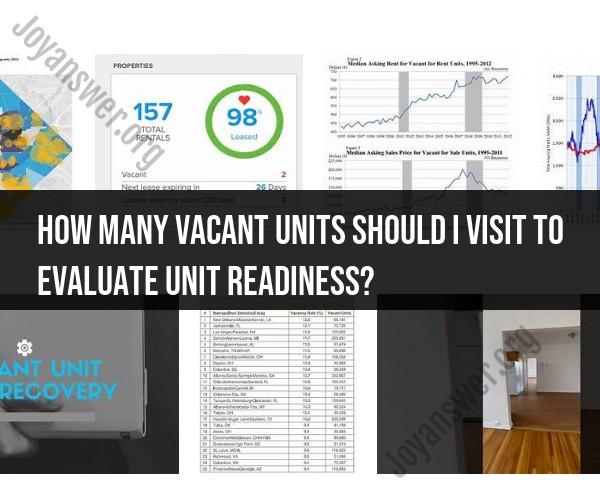How many vacant units should I visit to evaluate unit readiness?
The number of vacant units you should visit to evaluate unit readiness can vary depending on several factors, including the purpose of the evaluation, the size of the property or complex, and the specific criteria you're assessing. Here are some considerations to help you determine the appropriate number of units to visit:
Property Size: Larger properties with more units may require a statistically significant sample size. In such cases, you might choose a representative sample of units to visit.
Purpose of Evaluation: If you're conducting a routine inspection or quality check, visiting a smaller sample size of units may be sufficient. However, if you're assessing readiness for a specific purpose (e.g., move-in readiness for new tenants), you might want to inspect all relevant units.
Time and Resources: Consider the time and resources available for the evaluation. Inspecting all vacant units may be time-consuming and resource-intensive, so you may opt for a smaller sample size.
Historical Data: Review historical data to determine if there are patterns of readiness or issues that may guide your decision. If certain types of units consistently have readiness problems, you may want to focus on those.
Random Sampling: If you decide to visit a sample of units, ensure that your selection is random and unbiased to obtain a representative assessment.
Specific Criteria: Determine the specific criteria you're assessing (e.g., cleanliness, maintenance, safety) and tailor your approach accordingly.
In general, a common approach is to inspect a random sample of 10-20% of vacant units, but this can vary based on the factors mentioned above. It's important to balance the thoroughness of your evaluation with practical considerations like time and resources. Additionally, ensure that your evaluation process is consistent and well-documented to maintain fairness and transparency.












